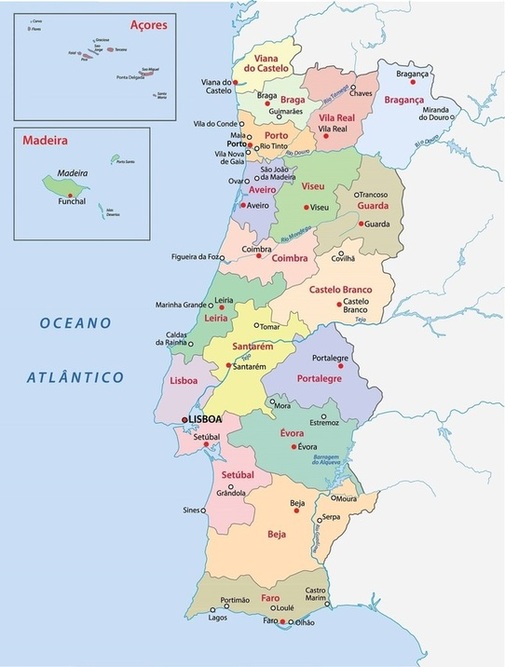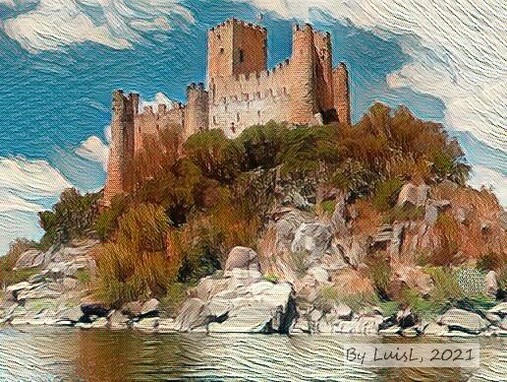
Location - District: Santarém; Municipality: Vila Nova da Barquinha
Status: Classified as National Monument since 1910
Time of existence of the castle

The Castle and its geographical location
Almourol Castle is situated on a small craggy island in the Tagus River, downstream, a little below its confluence with the Zêzere River (in Constância).
It is one of the most emblematic medieval military monuments of the Christian Reconquest of the Iberian Peninsula and, at the same time, one of the monuments that best evokes the memory of the Knights Templar in Portugal.
It is based on a granite outcrop of a small island (310 meters long by 75 meters wide), occupying almost all the available space, at a height of more than 15 meters above the water level, which allowed it to remain unaffected throughout the centuries by the floods of the Tagus River that usually occurred in winter.
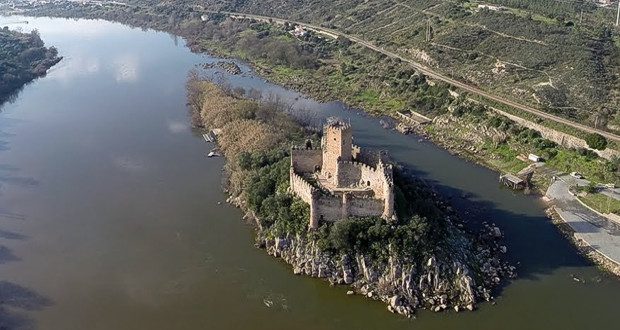
It is a castle of great constructive refinement, revealing the knowledge and mastery of the Templars in military architecture and an extraordinary use of the site, being its keep, one of the oldest and most dated Portuguese keepers of Portugal.
Here worked no doubt some of the best craftsmen who then existed in the reign of Portugal, otherwise it would not have resisted for so many centuries the ravages of the passage of time and the careless action of men.
Brief historical summary
The primitive human occupation of the site dates back to a prehistoric fort, conquered by the Romans in the 1st century BC, who remodelled it according to the Castrian technique. It was later occupied by the Alans, Visigoths and Muslims.
In excavations carried out inside and outside the castle, several remains from the Roman and medieval period were recovered.
When in 1129 the troops of the future Kingdom of Portugal (1139) conquered this strategic point of the country, the Castle already existed with the name Al-morolan (high stone).
The old fortification was then donated by King Afonso Henriques (1112-1185), future King Afonso I of Portugal (1145-1185), to the Knights of the Order of the Temple, in the person of their Master in Portugal, King Gualdim Pais.
Almourol Castle and the Order of the Knights Templar
When Almourol Castle was built, what was donated to the Order of the Knights Templar were areas destroyed by recent events, poorly populated and in need of defensive structures since they were unstable frontier locations.
At the time, the Order of the Temple's mission was to settle the territory between the Mondego and Tagus rivers and to defend Coimbra, the then capital of the Kingdom of Portugal.
In the hands of the Knights Templar, the castle was rebuilt on a date that we do not know, when it acquired, in general terms, its current features. An epigraphic plaque over the main gate tells us that its construction was completed in 1171.
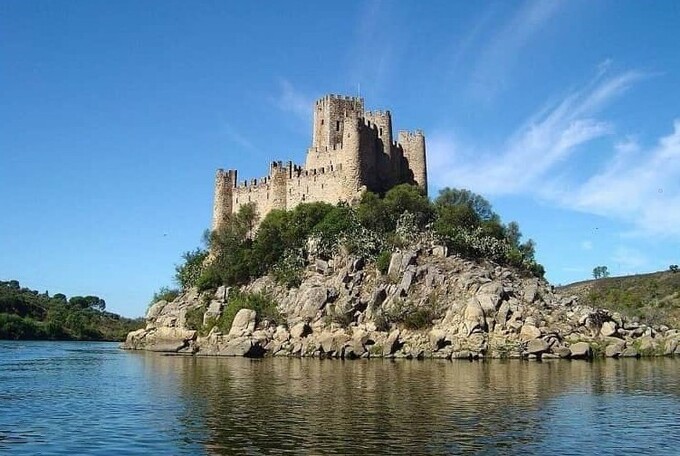
Some of the Templar castles (for example Soure or Longroiva) already existed before they were donated to the Templars. In these cases, the Order proceeded mainly to the reform of its architecture, aiming to improve its defence conditions.
In other cases (e.g. Tomar, Pombal or Almourol) the castles were built from scratch. Here the Templars applied their knowledge of military architecture revealing how up to date they were at the time with their state of the art.
The Order of the Temple was in fact responsible for introducing several innovations in Portuguese military architecture during the 12th century.
It should also be noted that the construction of the castle was begun when the Order was working on the keep of Pombal castle. This may explain why both have very similar inscriptions, surely executed by the same craftsman and with almost identical texts.
When the Order of the Temple ceased to exist in the 14th century (in 1312), Almourol Castle became part of the patrimony of a new military order: the Order of the Knights of Christ or Order of Christ (which was the successor in Portugal of the Order of the Templars), which occurred during the reign of King Dinis.
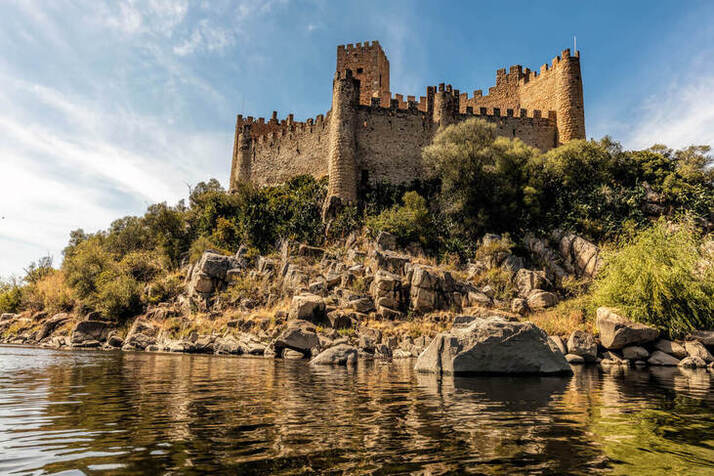
Almourol Castle and the loss of its strategic importance
With the reconquering context that justified its importance in medieval times now gone, Almourol Castle gradually lost its strategic importance and was gradually forgotten and abandoned.
It appears in a reference in Parochial Memoirs of the 18th century (1756) where it is written, and we quote "it had been like that for about a hundred years".
The earthquake of 1755 caused considerable damage to the castle structure. Later, already in the 19th century, it was "rediscovered", inserted in a European wave of romantic search and revaluation of the Middle Ages, which was also experienced in Portugal.
As a result, restoration works were carried out, but the true extent of the impact on the existing structures is unknown.
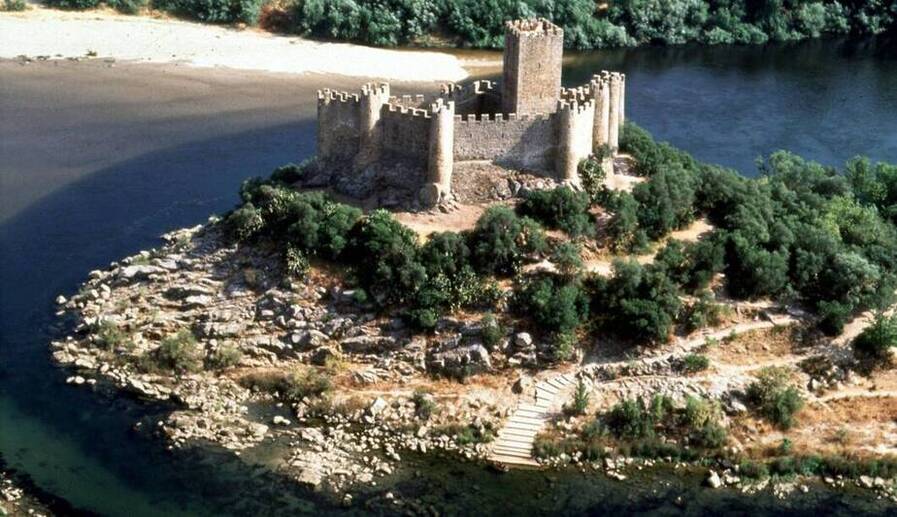
Almourol Castle in the 20th and 21st Centuries
In the second half of the 20th century, the castle was handed over to the Portuguese Army, under the responsibility of the commander of the Practical School of Engineering of Tancos, to which it is still assigned today (Ministry of National Defence).
More recently (1996), the Direcção Geral dos Edifícios e Monumentos Nacionais (DGEMN) and the Serviços de Engenharia do Estado Maior do Exército have carried out various conservation and improvement works on the castle.
Already this century (2013), promoted by the City Council of Vila Nova da Barquinha, new interventions of improvement of the walls were carried out as well as the intervention in the dungeon of Almourol Castle to create a museum space.
In 2006 two new quays for tourist boats were inaugurated: one on the right bank of the Tagus and the other on the south side of the island
Like it? Then share it!

